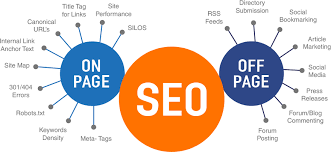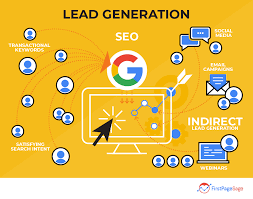The Importance of On-Site SEO for Your Website
When it comes to improving your website’s visibility and ranking on search engine results pages (SERPs), on-site SEO plays a crucial role. On-site SEO, also known as on-page SEO, involves optimising various elements within your website to make it more search engine-friendly and user-friendly. By focusing on on-site SEO, you can enhance your site’s relevance, authority, and overall performance in the eyes of search engines like Google.
Key Aspects of On-Site SEO
There are several key aspects of on-site SEO that you should pay attention to in order to maximise your website’s potential:
- Keyword Optimization: Incorporating relevant keywords naturally throughout your website’s content, meta tags, headings, and URLs can help improve your site’s visibility for specific search queries.
- Meta Tags: Optimising meta tags such as title tags and meta descriptions with targeted keywords can improve click-through rates and provide search engines with valuable information about your content.
- Quality Content: Creating high-quality, relevant, and engaging content that satisfies user intent is essential for both users and search engines. Content should be well-structured, informative, and easy to read.
- Internal Linking: Building a logical internal linking structure within your website helps search engines navigate and understand the relationships between different pages. It also distributes link equity throughout your site.
- User Experience (UX): Ensuring a positive user experience by focusing on site speed, mobile-friendliness, intuitive navigation, and clear calls-to-action can impact both user engagement metrics and search engine rankings.
The Benefits of On-Site SEO
Implementing effective on-site SEO practices offers a range of benefits for your website:
- Improved Search Engine Rankings: By optimising key elements within your website according to best practices, you increase the likelihood of ranking higher in SERPs for relevant keywords.
- Increased Organic Traffic: Higher rankings lead to increased visibility and organic traffic from users actively searching for products or information related to your offerings.
- Better User Experience: A well-optimised website that loads quickly, provides valuable content, and is easy to navigate enhances the overall user experience and encourages visitors to stay longer on your site.
- Enhanced Brand Authority: Consistently implementing strong on-site SEO signals professionalism and expertise in your industry, building trust with both users and search engines over time.
In Conclusion
On-site SEO is a fundamental aspect of any successful digital marketing strategy. By paying attention to the key elements outlined above and continuously refining your approach based on data-driven insights, you can position your website for long-term success in the competitive online landscape. Remember that effective on-site SEO is an ongoing process that requires dedication, monitoring, and adaptation to stay ahead of the curve in today’s dynamic digital environment.
If you’re looking to boost your online presence through comprehensive on-site SEO strategies tailored to your specific needs, don’t hesitate to reach out to our team of experts today!
Top 5 Benefits of Onsite SEO: Boost Rankings, Visibility, and Brand Authority
- Improved search engine rankings for targeted keywords
- Enhanced visibility and organic traffic from relevant searches
- Better user experience leading to increased engagement and conversions
- Establishment of brand authority and credibility in the industry
- Long-term benefits through sustainable on-site SEO practices
Challenges of Onsite SEO: Time, Complexity, and External Constraints
- 1. Time-Consuming
- 2. Technical Complexity
- 3. Competitive Landscape
- 4. Initial Investment
- 5. Limited Control Over External Factors
- 6. Results May Take Time
Improved search engine rankings for targeted keywords
One of the key benefits of implementing effective on-site SEO is the significant improvement in search engine rankings for targeted keywords. By strategically optimising your website’s content, meta tags, and other on-page elements with relevant keywords, you increase the visibility and relevance of your site for specific search queries. This targeted approach not only helps attract more organic traffic from users actively seeking information related to your offerings but also enhances your site’s authority and credibility in the eyes of search engines like Google. Ultimately, improved search engine rankings for targeted keywords can drive more qualified traffic to your website and boost your overall online presence and visibility.
Enhanced visibility and organic traffic from relevant searches
By implementing effective on-site SEO strategies, websites can experience a significant pro: enhanced visibility and increased organic traffic from relevant searches. Optimising key elements such as keywords, meta tags, and content structure helps websites rank higher in search engine results pages for specific queries, making them more visible to potential visitors actively seeking related information or products. This targeted approach not only boosts organic traffic but also ensures that the audience reaching the site is genuinely interested in its offerings, leading to higher engagement and conversion rates.
Better user experience leading to increased engagement and conversions
One significant advantage of implementing on-site SEO is the enhancement of user experience, which ultimately results in increased engagement and conversions. By focusing on factors such as site speed, mobile responsiveness, intuitive navigation, and high-quality content, websites can create a seamless and enjoyable experience for visitors. This positive user experience not only encourages users to explore the site further but also increases the likelihood of them taking desired actions, such as making a purchase or submitting a contact form. Ultimately, prioritising user experience through on-site SEO can lead to improved conversion rates and overall success for businesses online.
Establishment of brand authority and credibility in the industry
An important benefit of on-site SEO is the establishment of brand authority and credibility within your industry. By implementing effective on-page optimisation strategies, such as creating high-quality content, optimising meta tags, and improving user experience, your website can showcase expertise and professionalism to both users and search engines. This enhanced credibility not only builds trust with your target audience but also positions your brand as a reputable authority in the industry, ultimately leading to increased brand recognition and customer loyalty.
Long-term benefits through sustainable on-site SEO practices
By prioritising sustainable on-site SEO practices, websites can reap long-term benefits that extend far beyond short-lived boosts in search engine rankings. Implementing strategies focused on quality content, keyword optimisation, user experience enhancements, and consistent updates not only improve visibility and organic traffic but also establish a strong foundation for enduring online success. By investing in sustainable on-site SEO practices, websites can build authority, credibility, and relevance over time, ensuring a steady stream of targeted traffic and meaningful engagement with their audience.
1. Time-Consuming
One significant drawback of on-site SEO is its time-consuming nature. The process of implementing and maintaining on-site SEO strategies demands consistent attention and effort. From conducting keyword research to updating meta tags and improving content, each task requires meticulous planning and execution. Additionally, search engine algorithms frequently evolve, necessitating regular updates and adjustments to keep up with the latest best practices. This ongoing commitment to on-site SEO can be resource-intensive for businesses, especially those with limited time and manpower available for such tasks.
2. Technical Complexity
One significant drawback of on-site SEO is the technical complexity involved in certain aspects, such as schema markup implementation and website structure optimisation. These tasks often demand a level of technical expertise that may exceed the capabilities of many website owners. Without the necessary knowledge and skills to handle intricate technical details, website owners may struggle to effectively implement these elements, potentially hindering their site’s overall SEO performance and visibility in search engine results.
3. Competitive Landscape
In the realm of on-site SEO, one notable challenge is navigating the competitive landscape. The constant evolution of search engine algorithms means that staying ahead of competitors in implementing effective on-site SEO practices can be a daunting task. Keeping up with the latest trends, algorithm updates, and strategies employed by rivals requires continuous monitoring and adaptation to maintain a competitive edge. Failure to stay abreast of these changes can result in falling behind in search engine rankings and losing valuable organic traffic to more agile competitors.
4. Initial Investment
One notable downside of on-site SEO is the initial investment it may entail. To achieve substantial results through on-site SEO strategies, businesses may need to allocate resources towards acquiring tools, hiring professionals, or investing in services that can optimise their website effectively. This upfront cost can pose a challenge for some organisations, especially those with limited budgets or competing priorities. However, viewing this investment as a long-term strategy to enhance online visibility and drive sustainable growth can help justify the initial financial outlay in the pursuit of long-lasting benefits.
5. Limited Control Over External Factors
One significant drawback of on-site SEO is the limited control over external factors that influence search engine rankings. Despite optimising your website internally, external elements such as backlinks and social signals continue to impact your site’s performance in search results. These external factors, which are often influenced by other websites and online platforms, can sometimes overshadow the efforts made on your own site, highlighting the complex and interconnected nature of SEO strategies.
6. Results May Take Time
One notable downside of on-site SEO is the time it takes for results to become apparent. In contrast to certain paid advertising strategies that can yield immediate outcomes, the effects of on-site SEO efforts may require patience before noticeable improvements in search engine rankings and organic traffic are observed. This delay in seeing tangible results can be frustrating for website owners seeking quick wins or instant gratification from their digital marketing efforts. However, understanding that the long-term benefits of on-site SEO can significantly outweigh the initial time investment is crucial for maintaining a strategic and sustainable approach to improving online visibility.




